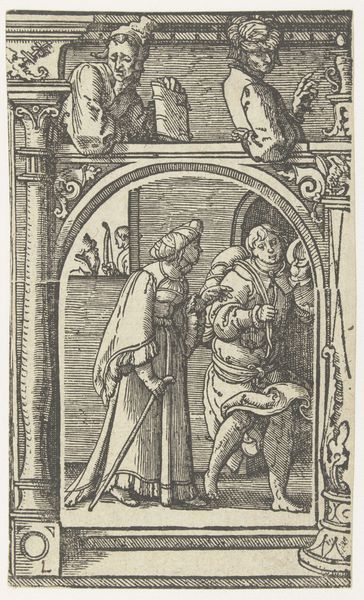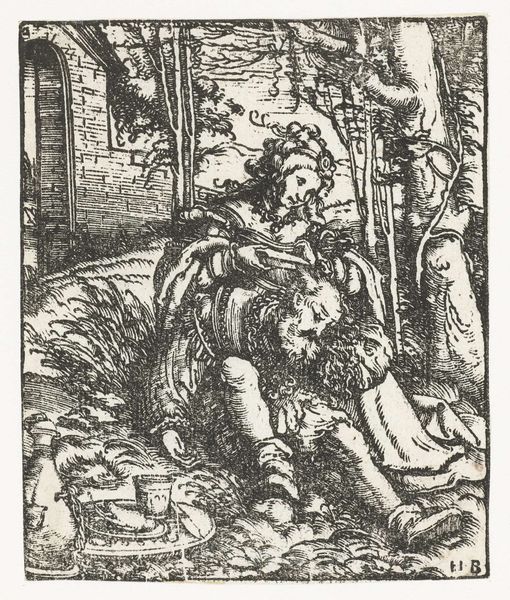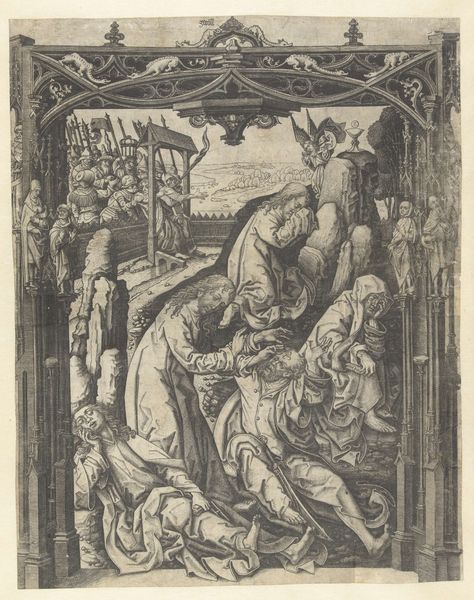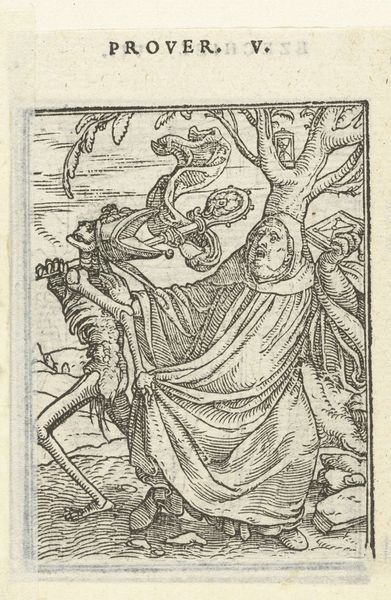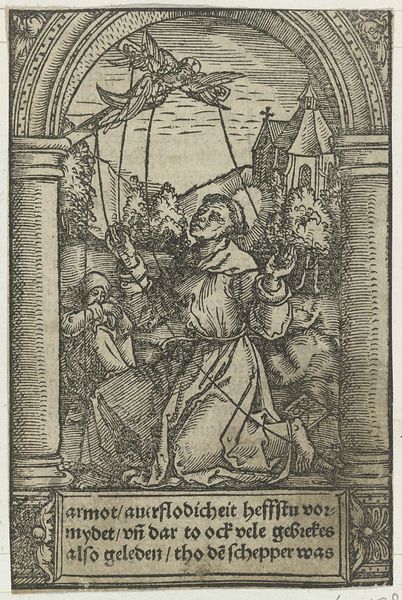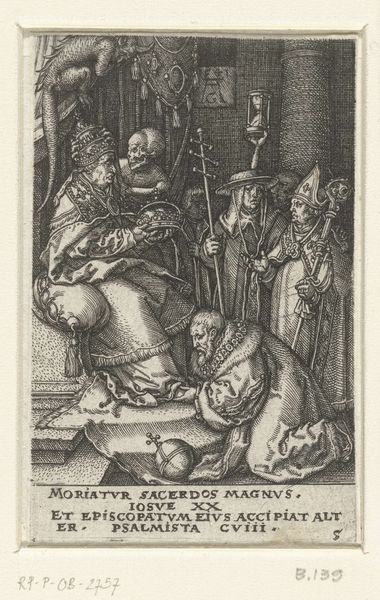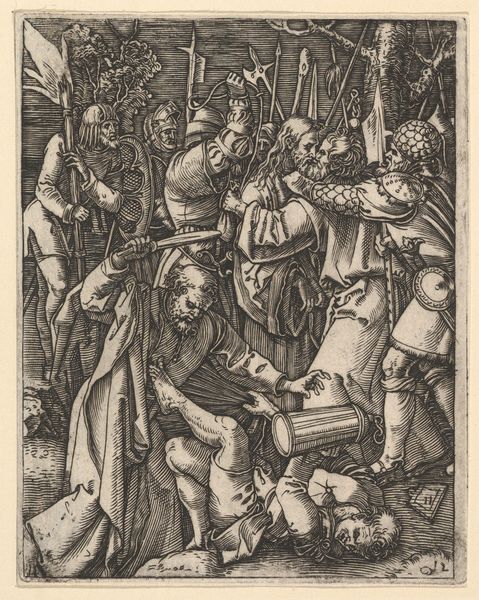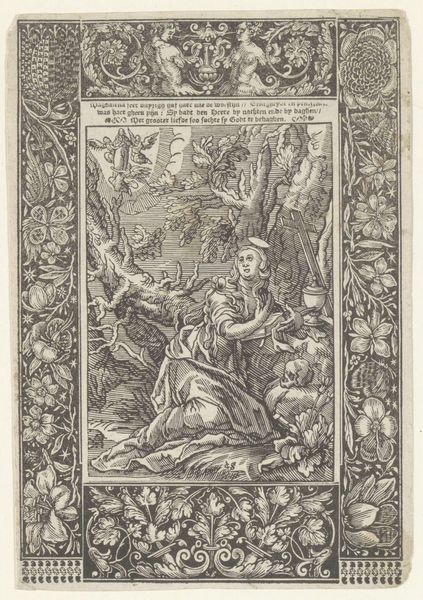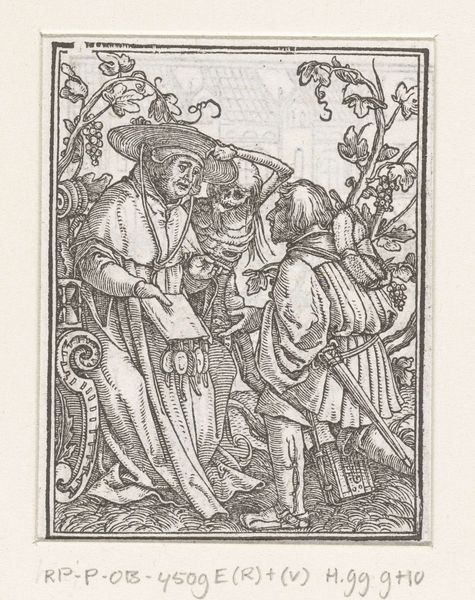
print, woodcut, engraving
#
allegory
# print
#
pen illustration
#
old engraving style
#
figuration
#
ink line art
#
pen-ink sketch
#
thin linework
#
woodcut
#
line
#
pen work
#
history-painting
#
northern-renaissance
#
engraving
Dimensions: height 65 mm, width 50 mm
Copyright: Rijks Museum: Open Domain
Curator: Here we have "Keizer en de Dood," or "The Emperor and Death," a print made sometime between 1524 and 1538 by Hans Holbein the Younger, found here in the Rijksmuseum collection. Editor: My immediate impression is one of foreboding. The skeletal figure looming over the emperor is quite stark. The fine linework also creates an interesting tension between detail and a sense of unease. Curator: Indeed. Holbein was a master of the woodcut, and his skills are fully on display here. Note how the density of the lines creates areas of deep shadow, contrasting sharply with the lighter areas to define form and texture. It is tempting to focus on its material elements; what wood was used? How many prints could the block yield? What dyes would have been available for larger versions? Editor: And, of course, this wasn't just an aesthetic exercise. Prints like this served as a form of popular communication. The image taps into the Memento Mori tradition, a reminder of the inevitability of death, intended for broad consumption across different social strata. Consider its function at a moment of widespread social and religious upheaval. Curator: Exactly. Holbein cleverly exploits the medium's inherent qualities. The use of line, almost relentlessly repeated, emphasizes the democratic nature of printmaking itself, making art and commentary accessible to a wider audience. Editor: I wonder how much the socio-political context of the time – the rise of powerful rulers, and emerging class identities – influenced its interpretation by contemporary viewers. The print’s function certainly shifted based on the wealth of its owners. What stories were told differently depending on who was in power? Curator: It brings us back to that question of material conditions; the social and political power enabled through making prints, in this instance Holbein offering both art and social commentary in a single, accessible format. Editor: Thinking about it now, this artwork reminds me that art isn't created in a vacuum, and both its creation and consumption are affected by larger social forces and power structures. Curator: Yes, from the cut of the woodblock to the reception history of each individual print, this work becomes a fascinating testament to human agency in an historical web.
Comments
No comments
Be the first to comment and join the conversation on the ultimate creative platform.

